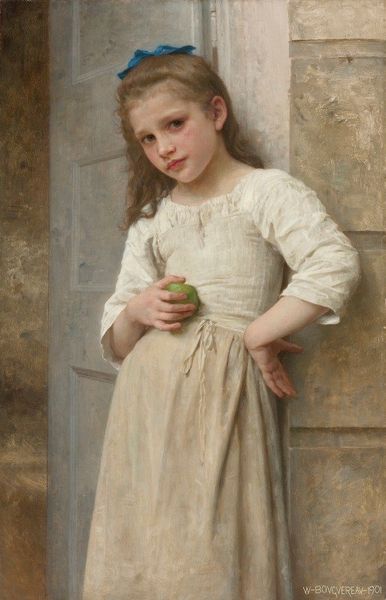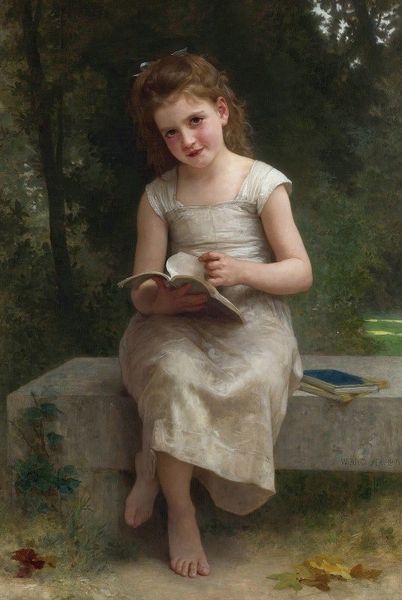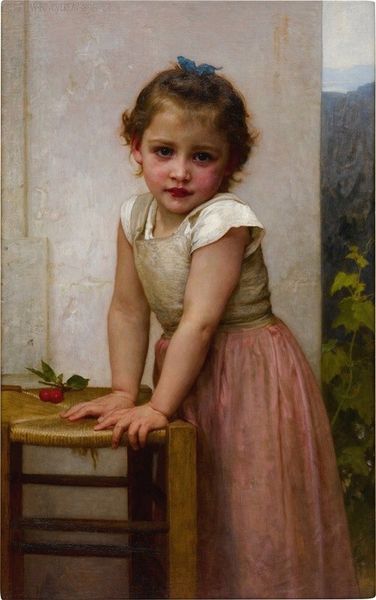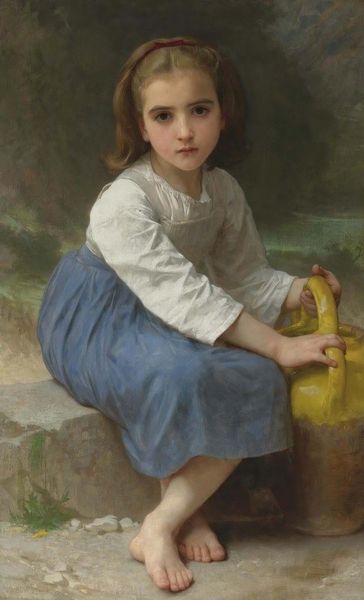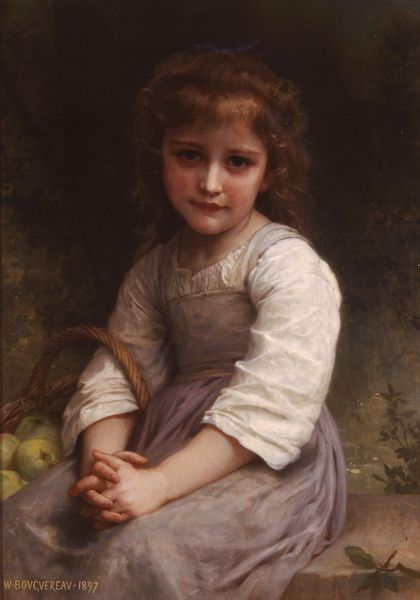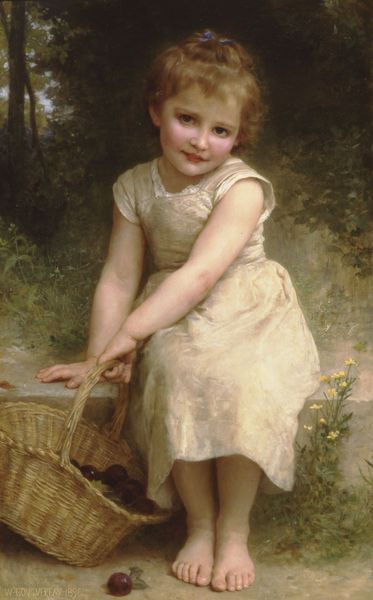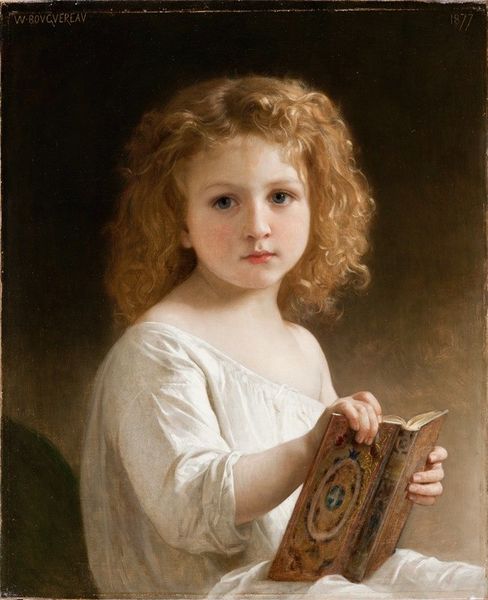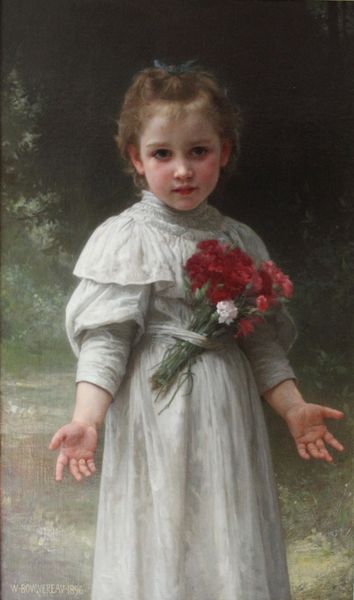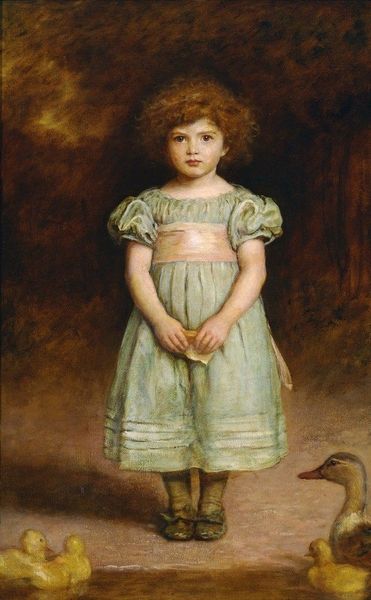
Copyright: Public Domain: Artvee
William Bouguereau’s painting captures a young girl holding apples, likely created in 1895. Notice how Bouguereau frames the subject with a clear division between the dark background and the girl's figure. The composition and colour create a focal point on the girl’s face, guiding the viewer's eye. Bouguereau's strategic placement of light and shadow defines form and texture. Her skin is rendered with a soft, almost porcelain-like smoothness, while the texture of her dress adds depth to the composition. The apples draw attention as compositional elements and symbols, possibly representing innocence or temptation. The subtle, muted colours contribute to the painting's realism, rooted in the academic tradition. Bouguereau's work challenges our perceptions of beauty, representation, and the role of academic painting within broader cultural narratives. Through formal and art historical analysis, the painting's impact reveals how visual elements intersect with cultural and philosophical discourse.
Comments
No comments
Be the first to comment and join the conversation on the ultimate creative platform.
